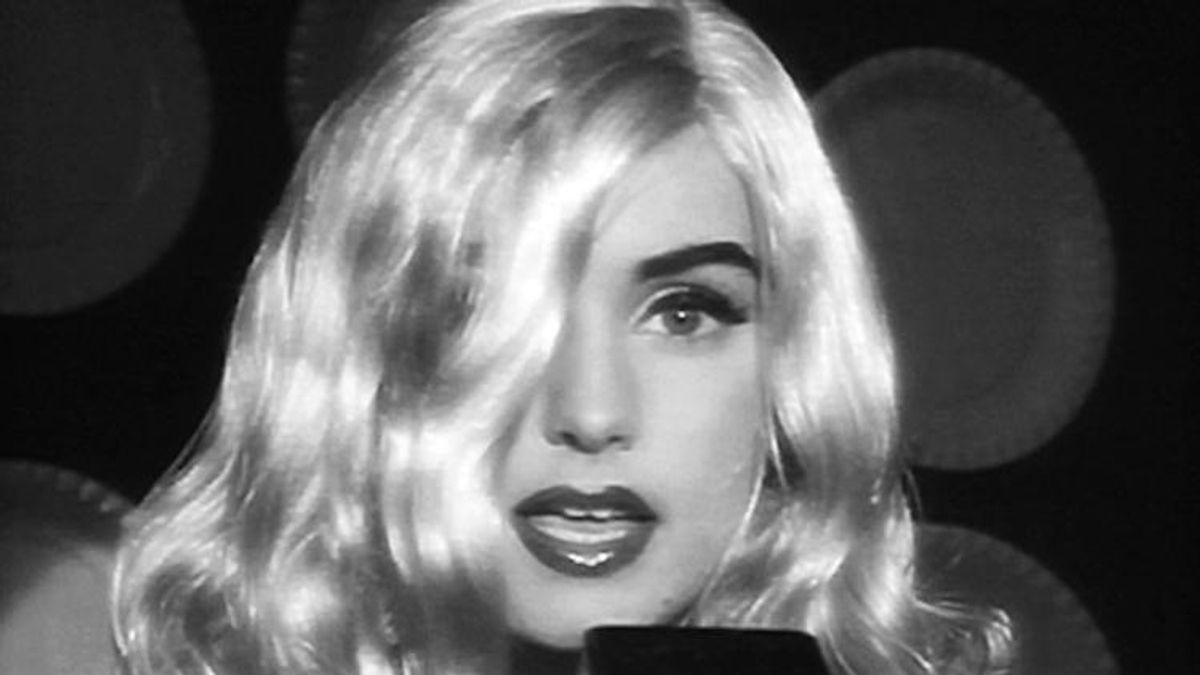For pop culture-obsessed Gen Xers and older millennials, the name Red Hot + Blue conjures up images and sounds from legendary artists like Sinead O’Connor, Madonna, Keith Haring, and George Michael. The Red Hot albums, videos, and posters still resonate so strongly because they were some of the first to successfully make condoms and HIV education sexy to the MTV generation.
Over the course of three decades, the nonprofit Red Hot Organization raised tens of millions for HIV and LGBTQ+ groups through sales of 20 Red Hot albums, some of which included videos from world-famous directors like Jim Jarmusch and Jonathan Demme. The organization also launched a public service campaign in 1992, utilizing famed photographers like Bruce Weber and Steven Meisel to shoot naked couples (opposite-sex and same-sex!) in an effort to spread the word that “Safe Sex is Hot Sex.”
To celebrate the 30th anniversary of their first album — the iconic Cole Porter collection, Red Hot + Blue — the Red Hot Organization is reissuing five Red Hot albums and six never-released remixes of Neneh Cherry’s much-loved version of “I Got You Under My Skin” from that first album.

For an organization that persuaded the biggest names in entertainment to contribute their time and talents to their cause, Red Hot is a relatively modest operation. Entertainment lawyer John Carlin and his friend Leigh Blake came up with the idea to raise money for HIV causes by involving some of their illustrious friends.
“I was an art writer, curator, and teacher in the New York art world during the 1980s and became friends with a number of amazing visual artists who inspired me by their activism,” Carlin tells Plus. “Sadly, some of them, such as David Wojnarowicz and Keith Haring, got sick and eventually died from HIV/AIDS.”
Getting the nascent project off the ground was not easy, Carlin recalls.
“There was no initial funding,” he says. “I gave Leigh money out of my own pocket so she could afford to work on and produce the project. We eventually brought on a record label and film production company, both of which dropped out along the way, and we had to scramble to replace them while the project was taking off. The label recording fund and pre-sales to ABC, Channel 4, and worldwide sales through Canal+ provided the money to record the tracks, make the videos, and long form TV program.”
Carlin and Blake thought songwriter and composer Cole Porter was the perfect person to center the first CD around and they named the album after Porter’s musical, Red, Hot and Blue.
“Cole Porter was the original creative spark — songs by a closeted gay man that your grandmother loved — that became the perfect foundation for both the first successful tribute album and one dedicated to AIDS awareness and LGBTQ rights,” Carlin says.

With the world still drowning in HIV misinformation and stigma, Carlin and Blake initially struggled to sign on artists. Blake’s friendship with The Talking Heads’ lead singer David Byrne eventually led to a breakthrough — Red Hot + Blue’s first confirmed artists. Booking Annie Lennox, U2, and Deborah Harry for the album was made a bit easier thanks to The Talking Heads, but Carlin says it was a “long hard process.”
The work paid off — the album, released in September 1990, featured 20 songs, with 20 accompanying videos. The album sold over a million copies, launched a TV special, and kicked off a series of themed Red Hot albums, including Red Hot + Dance, Silencio=Muerte: Red Hot + Latin, an indie rock collection, and a Duke Ellington tribute album.
Red Hot continued to regularly release music, with 2016’s Grateful Dead-themed collection, Day of the Dead, their most recent. Carlin acknowledges the music industry’s diminishing album sales have forced the organization to rethink their business model.
“We were fortunate to receive a grant from Open Society [Foundation] recently to do a project related to the opioid crisis that began last year, but has been postponed due to the current pandemic,” Carlin laments.
Still, the organization is relishing its anniversary and the public’s opportunity to get reacquainted with Red Hot’s music, videos, and charitable legacy.
“From the start we wanted Red Hot to raise money by creating and selling products, mainly albums — and used related creative activities such as album packaging, videos, TV special, designs, posters and digital media to do good propaganda to promote safer sex, awareness of AIDS in communities of color around the world and LGBTQ rights,” Carlin says.
Carlin’s old friends, Haring and Wojnarowicz, would be proud.
Reissues of Red Hot + Blue, Red Hot + Bothered, Offbeat – A Red Hot Sound Trip, Silencio=Muerte: Red Hot + Latin, and Red Hot + Indigo are available now.













































































